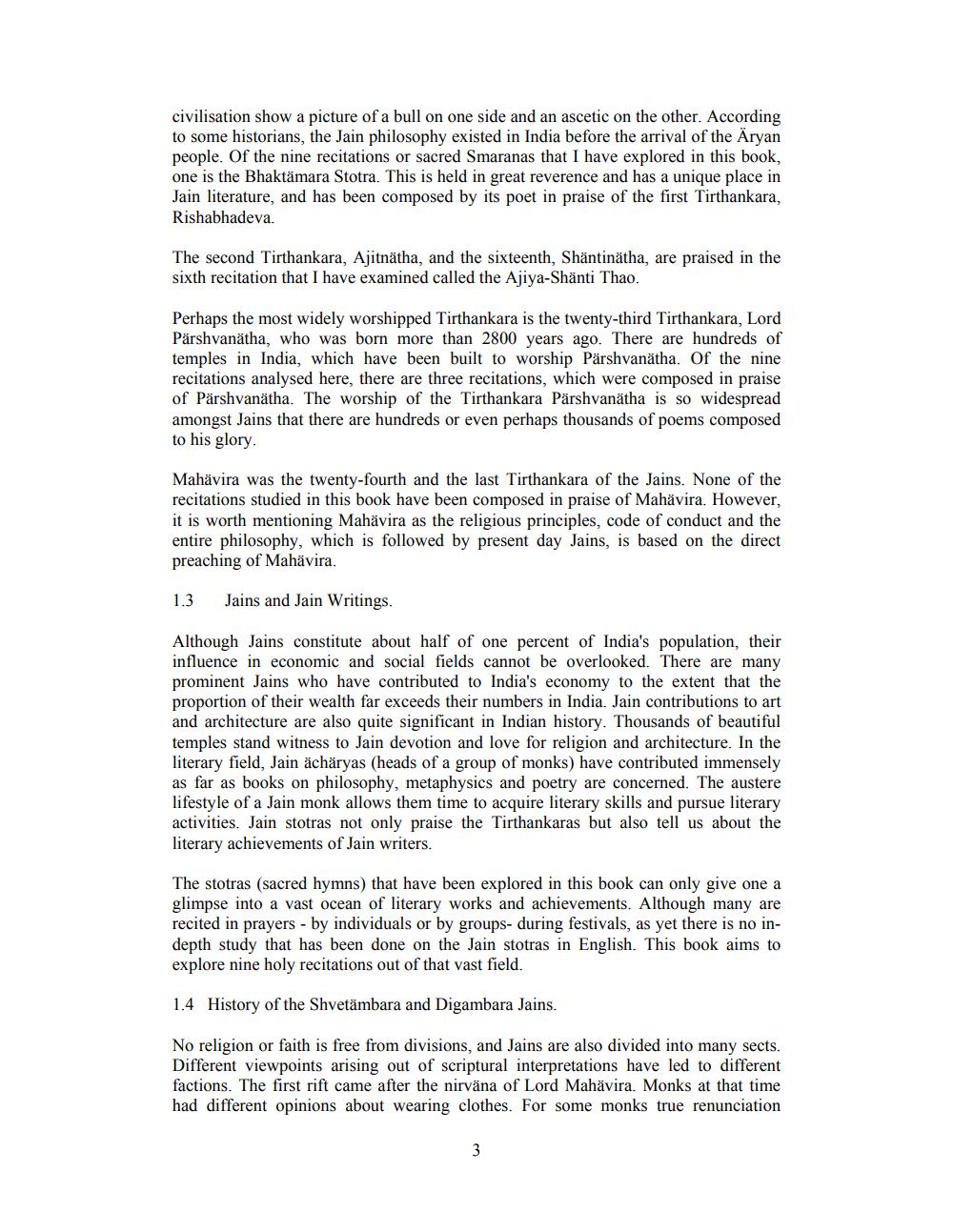Book Title: Nav Smarana Author(s): Vinod Kapashi Publisher: Vinod Kapashi View full book textPage 3
________________ civilisation show a picture of a bull on one side and an ascetic on the other. According to some historians, the Jain philosophy existed in India before the arrival of the Aryan people. Of the nine recitations or sacred Smaranas that I have explored in this book, one is the Bhaktämara Stotra. This is held in great reverence and has a unique place in Jain literature, and has been composed by its poet in praise of the first Tirthankara, Rishabhadeva. The second Tirthankara, Ajitnätha, and the sixteenth. Shäntinátha, are praised in the sixth recitation that I have examined called the Ajiya-Shanti Thao. Perhaps the most widely worshipped Tirthankara is the twenty-third Tirthankara, Lord Pärshvanätha, who was born more than 2800 years ago. There are hundreds of temples in India, which have been built to worship Pärshvanatha. Of the nine recitations analysed here, there are three recitations, which were composed in praise of Pärshvanätha. The worship of the Tirthankara Pärshvanätha is so widespread amongst Jains that there are hundreds or even perhaps thousands of poems composed to his glory. Mahävira was the twenty-fourth and the last Tirthankara of the Jains. None of the recitations studied in this book have been composed in praise of Mahävira. However, it is worth mentioning Mahävira as the religious principles, code of conduct and the entire philosophy, which is followed by present day Jains, is based on the direct preaching of Mahävira. 1.3 Jains and Jain Writings. Although Jains constitute about half of one percent of India's population, their influence in economic and social fields cannot be overlooked. There are many prominent Jains who have contributed to India's economy to the extent that the proportion of their wealth far exceeds their numbers in India. Jain contributions to art and architecture are also quite significant in Indian history. Thousands of beautiful temples stand witness to Jain devotion and love for religion and architecture. In the literary field, Jain ächäryas (heads of a group of monks) have contributed immensely as far as books on philosophy, metaphysics and poetry are concerned. The austere lifestyle of a Jain monk allows them time to acquire literary skills and pursue literary activities. Jain stotras not only praise the Tirthankaras but also tell us about the literary achievements of Jain writers. The stotras (sacred hymns) that have been explored in this book can only give one a glimpse into a vast ocean of literary works and achievements. Although many are recited in prayers - by individuals or by groups- during festivals, as yet there is no indepth study that has been done on the Jain stotras in English. This book aims to explore nine holy recitations out of that vast field. 1.4 History of the Shvetämbara and Digambara Jains. No religion or faith is free from divisions, and Jains are also divided into many sects. Different viewpoints arising out of scriptural interpretations have led to different factions. The first rift came after the nirvana of Lord Mahävira. Monks at that time had different opinions about wearing clothes. For some monks true renunciationPage Navigation
1 2 3 4 5 6 7 8 9 10 11 12 13 14 15 16 17 18 19 20 21 22 23 24 25 26 27 28 29 30 31 32 ... 224
